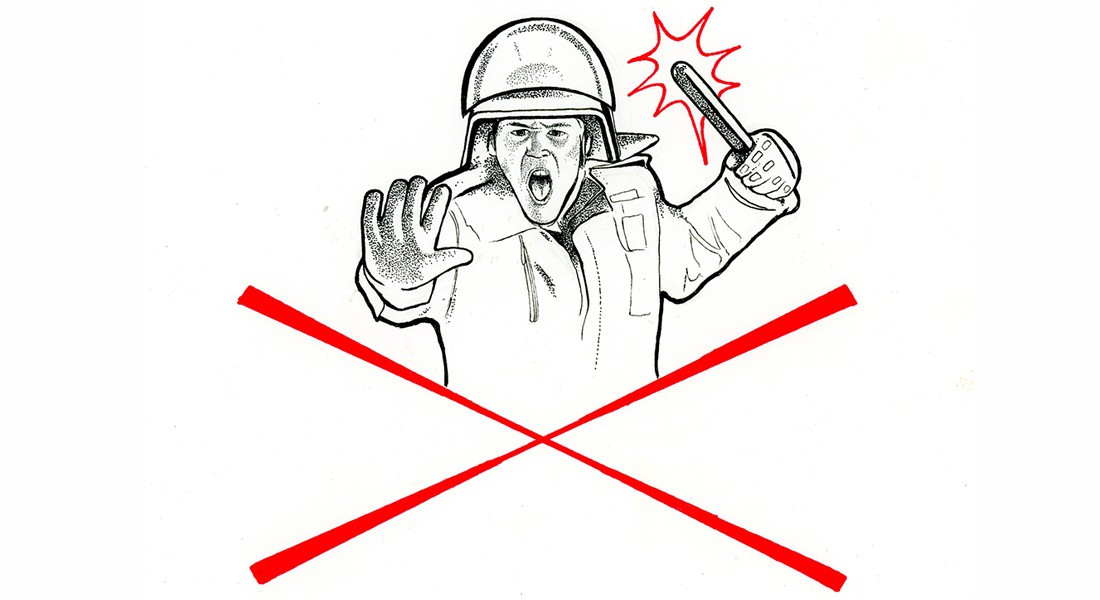Troubling increase in police shootings
More deaths won’t make us any safer
If someone had said that 2020 would be marked by a pandemic, economic slowdown and an increase in police shootings, many people may have laughed them off. Well, we’re only five months into the new year, and here we are.
In March and April alone, police have been responsible for four deaths in Winnipeg. Three of these shootings occurred within a 10-day span. All three individuals were Indigenous, and one of them a 16-year-old girl.
The circumstances surrounding each of the incidents differ, but they all resulted in loss of life at the hands of the very people we look to for safety and protection. Winnipeg police Chief Danny Smyth said at a press conference: “I can tell you the officers did not come to work expecting to be involved in shootings, especially in shootings that resulted in fatalities.”
Winnipeggers need to believe that police officers leave their homes each day intending to keep us safe, not kill us. Smyth's words are reassuring to some, but why did these shootings happen to begin with?
Why is it that the police have shot at and killed four people – and in such a short span of time? Did the circumstances warrant the extent of police response in each case? Were there really no other alternatives? Why are most of these shootings of Indigenous people? Can law and order not be pursued while also preventing the deaths of suspects?
The four shootings took place as follows. An unnamed 27-year-old male was shot on March 10 and died later that day at the hospital. On April 8, 16 year-old Eishia Hudson was shot and killed.
Less than 24 hours later, the police responded to a domestic call where a police officer shot and killed Jason Collins, a 36-year-old man. Stewart Kevin Andrews, who was 22 years old, was shot and killed following a call about two incidents (robbery and broken windows) within the same area.
According to a CBC Manitoba article published on April 29, the Winnipeg Police Service (WPS) has shot and killed 19 people since 2000, 12 of whom were Indigenous. Of those 19 cases, 15 have been deemed “justified” by the Independent Investigations Unit (IIU), and no charges were made. The remaining four cases are still being investigated.
These numbers don’t take into account victims who survive police shootings, like the 16-year-old boy who was shot nine times by Winnipeg police following a 7-Eleven robbery in December, but survived. The data also doesn’t account for people who are killed by methods other than gunfire. In a six-month span in 2019, six men died while in Winnipeg police custody.
Judging from history, the odds are not in our favour.
With this information, the question then becomes: does this kind of policing make Winnipeg safer, or does it increase fear of and distrust in the police force? How can Indigenous Winnipeggers feel safe or protected when our history demonstrates heinous acts? It is a double-edged sword. Indigenous people are racially profiled and overrepresented in the criminal justice system. They, in turn, may distrust officers because of their lived experience. The two factors can then escalate their encounters.
On April 29, the Assembly of Manitoba Chiefs called for the police to invest in body cameras. According to the CBC, the WPS and IIU both agree that body cameras would help in investigations, but body cameras won’t be included in the police budget until at least 2023. As Zane Tessler, the executive director of IIU, was quoted as saying in a CBC article, body cameras are “really another form of a witness to these circumstances.” They may help in the investigation after a death occurs. But will they prevent or reduce violent incidents?
Valerie Nyamori is a Kenyan-Canadian writer. She loves Winnipeg but struggles with the winter. She gets through the season by reading any books she gets her hands on and drinking too much tea.
Published in Volume 74, Number 25 of The Uniter (May 1, 2020)







